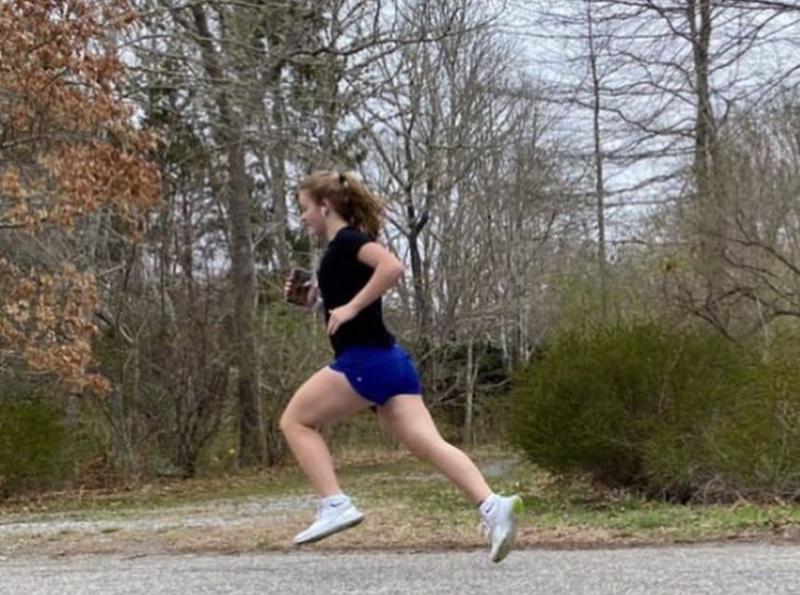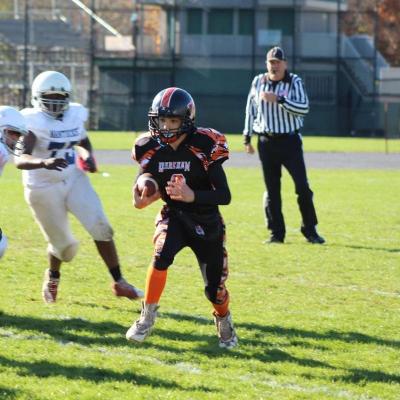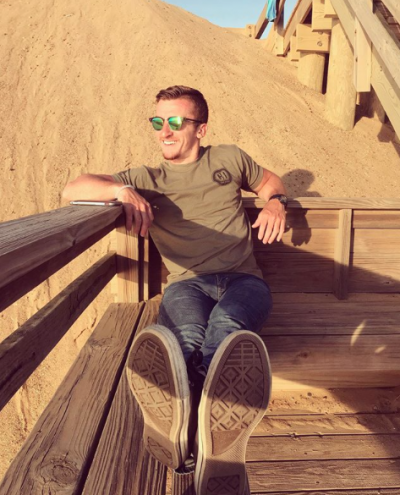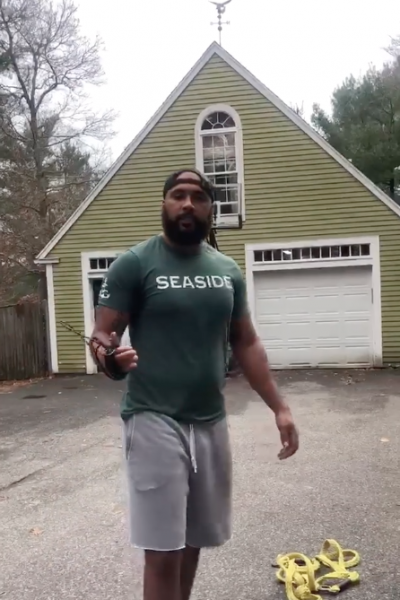Coaches, athletes adapt to home training
Athletes across the South Coast have been running, jumping, and lifting at home to stay in shape during the quarantine, with help from coaches Justin Lupone and Eric Custadio of Wareham’s Seaside Athletic Performance.
Custadio is the gym’s head strength and conditioning coach, while Lupone is the skills coach with a focus on technique and craft. Together, they have been sending workout routines, challenges, and words of encouragement to about 50 athletes who are training in their bedrooms and backyards while gyms are closed, and competitions are canceled due to the coronavirus pandemic. The athletes range in age from middle school students to adults.
Both men said that they have had to adapt the way they coach, as working from a distance has posed some challenges along the way.
“The biggest challenge is it’s hard for oversight,” Lupone said.
Since he can’t be there to make corrections and adjustments for each individual athlete, Lupone has taken to Instagram, by posting videos of sample workouts to help guide athletes through their training.
For Custadio, the distance has made it more difficult to keep athletes engaged, as he can’t be present to encourage them in person.
To keep his athletes motivated, Custadio has started issuing weekly challenges where participants compete against each other, and send videos of their results.
Custadio said that the challenges are simple and don’t require any equipment. So far, he has had athletes compete to see who can jump the farthest, and who can run 800 meters the fastest.
Perhaps the most obvious challenge posed by coaching remotely, is simply not having access to the gym and its equipment.
Custadio said that he has been issuing three versions of his workouts, depending on how much equipment athletes have access to at home.
For athletes with little to no workout equipment at home, he has suggested getting creative, so long as it is safe to do so.
For example, a backpack full of bricks can be used when lifting weights isn’t an option.
He added that there are other ways to make an exercise more difficult besides adding more weight. While athletes might not have a heavy barbell at home, they can alter the tempo of basic exercises like squats to make them more challenging by going slow on the way down, and then pausing for one second at the bottom of the repetition, before going back up again.
Custadio said that he tries to make workouts that can be done with a limited amount of space, but does include some outdoor routines on days when the weather is nice. He added that for those with access to it “a good hill sprint is one of the best things you can do.”
Lupone has taken a similar approach with his skill-based drills. While cones are a staple of speed and agility drills on the football field, Lupone said his athletes are substituting the football field with their backyard, and cones with everyday items like shoes.
The skills coach said that many athletes are eager to get back to their sport, but with the season in limbo, he has been telling them to “take it day by day, you have to stay ready” for if, and when the spring season starts.
Colby Alves is a senior at Old Rochester Regional High School. Although he doesn’t actually play a high school sport, he trained at Seaside Athletic Performance, and continues to workout from home during the quarantine.
Alves said that he has been following the “minimum equipment” routine since he has three pairs of dumbbells and a pull-up bar, but nothing else.
He added that the lack of a bench and limited selection of weights is less than ideal, but he has been following Custadio’s advice of switching up the tempo of exercises to make them more challenging.
Although he’s been doing one-arm dumbbell presses from the floor instead of a traditional bench press, he said that he is “lucky to have the dumbbells, some people are doing it with backpacks.”
Overall, Alves said that the most difficult thing about training during quarantine is the lack of a regular schedule. Normally he would go to the gym right after school, but without the school day to keep him in his usual routine, it can be more difficult to stay motivated.
Despite the challenges from training at home, Alves said that his coaches have been great at communicating with him, and have been putting in a lot of time and effort to keep athletes engaged while the gym is closed.
















